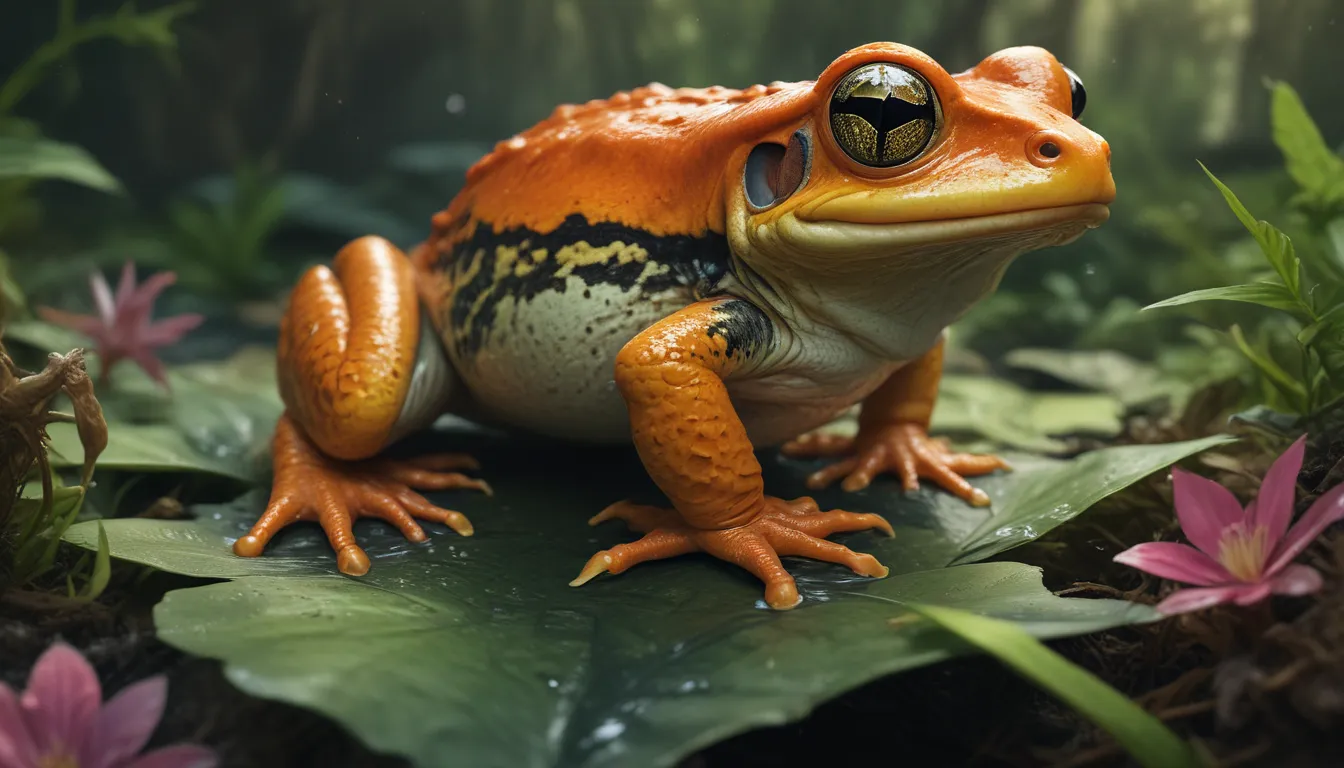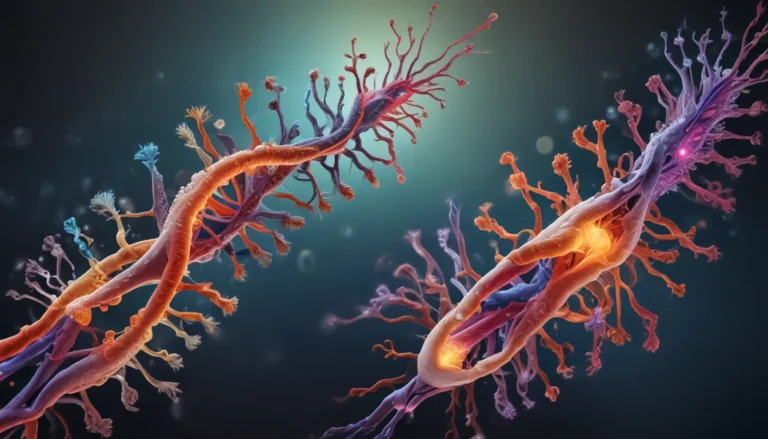A Note About Images: The images used in our articles are for illustration purposes only and may not exactly match the content. They are meant to engage readers, but the text should be relied upon for accurate information.
Amphibians, with their unique characteristics and remarkable adaptations, have long been a source of fascination for scientists and nature enthusiasts. In this article, we will dive into the captivating world of amphibians and reveal 10 extraordinary facts that highlight their incredible attributes. From their permeable skin to their complex vocalizations, amphibians continue to intrigue biologists and researchers worldwide. So, join us on this journey as we explore the wonders of these remarkable creatures and uncover the secrets that make them truly extraordinary.
The Astonishing World of Amphibians
Amphibians, a diverse group of creatures, possess remarkable features that set them apart from other animals. Their ability to live both in water and on land, along with their unique methods of reproduction and adaptation, make them truly exceptional beings. Let’s embark on a journey to discover the fascinating world of amphibians and unravel the mysteries that make them such incredible creatures.
The Marvel of Permeable Skin
Amphibians boast permeable skin, a characteristic that sets them apart from other vertebrates. This unique feature allows them to absorb water and oxygen directly through their skin, enabling them to breathe and thrive in both aquatic and terrestrial environments. Additionally, their skin plays a crucial role in maintaining proper hydration levels, making it a vital organ for their survival.
The Enchantment of Metamorphosis
One of the most intriguing aspects of amphibians is their life cycle, which involves a process called metamorphosis. Starting as aquatic larvae with gills, resembling fish, they undergo a remarkable transformation as they develop legs and lungs, eventually transitioning into their adult form. This extraordinary process enables them to adapt to different environments and thrive in a variety of habitats.
The Charm of Ectothermy
Unlike mammals and birds, which can regulate their body temperature internally, amphibians are ectothermic creatures. This means that their body temperature is determined by the external environment, requiring them to bask in the sun or seek shade to maintain their ideal temperature. This unique characteristic sets them apart from other warm-blooded animals and adds to their fascinating nature.
The Mystery of Reproductive Strategies
Amphibians exhibit a diverse range of reproductive strategies, from laying eggs in water to giving birth to live young. Some species demonstrate extraordinary parental care by carrying their eggs or young on their bodies, showcasing the variety of approaches they utilize to ensure the survival of their offspring. These unique reproductive behaviors contribute to the rich diversity of amphibian species worldwide.
The Symphony of Vocalizations
Amphibians possess a remarkable ability to communicate through complex vocalizations, with frogs and toads being particularly known for their distinctive calls and songs. These vocalizations serve various purposes, including attracting mates, marking territory, and warning off potential predators. The diverse sounds produced by amphibians add an enchanting element to their already captivating nature.
The Vital Role in Ecosystems
Amphibians play essential roles in ecosystems as both predators and prey, contributing to the balance of various food chains. They help control populations of insects and other invertebrates, acting as natural pest controllers. Additionally, amphibians serve as key indicators of environmental health, as they are highly sensitive to pollution and habitat degradation, making them vital components of thriving ecosystems.
The Diversity of Adaptations
Adapting to diverse habitats, amphibians have evolved a wide array of unique adaptations. From camouflage to venomous glands for defense, these creatures have developed innovative ways to survive in their environments. Some amphibians, such as the axolotl, possess the remarkable ability to regenerate lost body parts, showcasing their incredible resilience and adaptability.
The Legacy of Millions of Years
With a long evolutionary history dating back over 300 million years, amphibians have successfully survived multiple mass extinction events and adapted to changing environments throughout the ages. Their resilience and ability to thrive in various habitats worldwide highlight their remarkable endurance and evolutionary success over millions of years.
The Spectrum of Shapes and Sizes
Amphibians exhibit incredible diversity in terms of their morphology and size, ranging from tiny frogs that can fit on a fingertip to giant salamanders that can reach lengths of over five feet. This vast array of shapes and sizes showcases the unique beauty and diversity of amphibians, making them a captivating group of creatures to study and appreciate.
The Value of Medical Research
Amphibians have made significant contributions to medical research, offering insights into human health through their unique abilities, such as tissue regeneration and complex immune systems. The African clawed frog, for example, has played a crucial role in the development of pregnancy tests, demonstrating the valuable role that amphibians play in advancing medical science and improving human health.
Conclusion: Celebrating the Extraordinary Amphibians
In conclusion, amphibians are truly remarkable creatures with a wealth of unique characteristics and adaptations that make them fascinating subjects of study and admiration. From their ability to live in diverse environments to their vital roles in ecosystems and their contributions to medical research, amphibians continue to captivate scientists and nature enthusiasts alike. As we delve deeper into the captivating world of these incredible creatures, let us celebrate their extraordinary nature and work together to protect and conserve their habitats for generations to come.
FAQs: Exploring the World of Amphibians
-
Can amphibians live in both water and on land?
Yes, amphibians possess the unique ability to inhabit aquatic environments during their early life stages and transition to terrestrial habitats as adults, showcasing their remarkable adaptability. -
Do all amphibians undergo metamorphosis?
While most species of frogs and toads undergo complete metamorphosis, some salamanders exhibit partial metamorphosis or undergo no change in their body structure at all, highlighting the diverse life cycles within the amphibian group. -
How do amphibians breathe?
Amphibians utilize a combination of lungs and skin respiration, breathing through their nostrils on land while also exchanging gases through their permeable skin, especially in aquatic environments, to meet their respiratory needs. -
What do amphibians eat?
With a diverse range of diets, amphibians consume various foods depending on the species. From carnivorous frogs and toads that feed on insects and small invertebrates to salamanders that consume small fish and crustaceans, their diets reflect their adaptability to different environments. -
Why are amphibians important for ecosystems?
Amphibians play vital roles in ecosystems as key indicators of environmental health and contributors to the balance and stability of food chains. By controlling populations of insects and invertebrates and serving as a food source for predators, they play essential roles in maintaining ecosystem health and diversity.
In the enchanting world of amphibians, each fact unravels a new layer of wonder and intrigue, inviting us to delve deeper into their captivating nature. As we continue to explore and learn about these extraordinary creatures, let us cherish and protect their habitats to ensure the enduring presence of these remarkable beings in our world.






